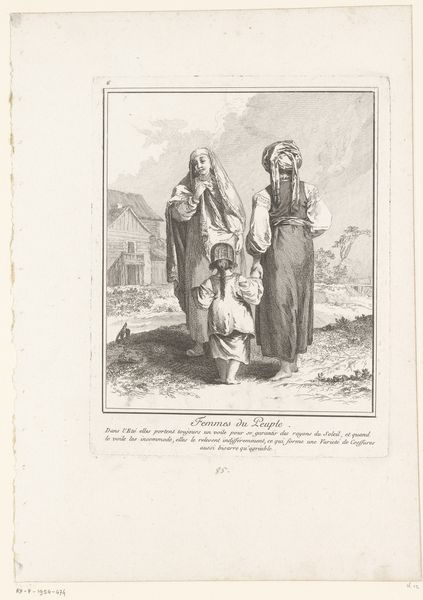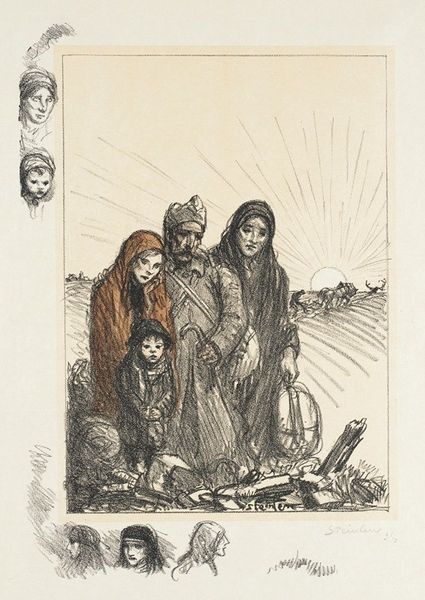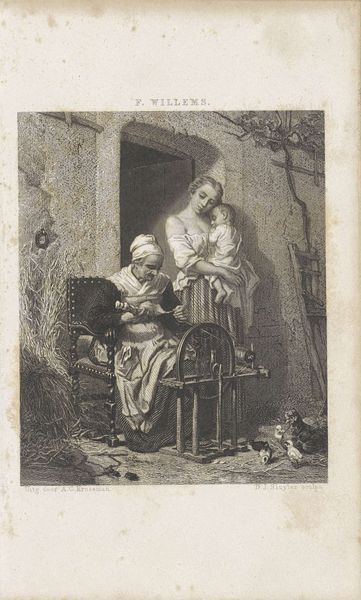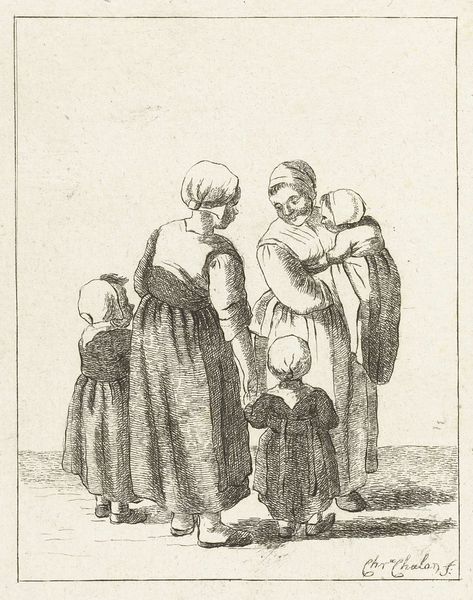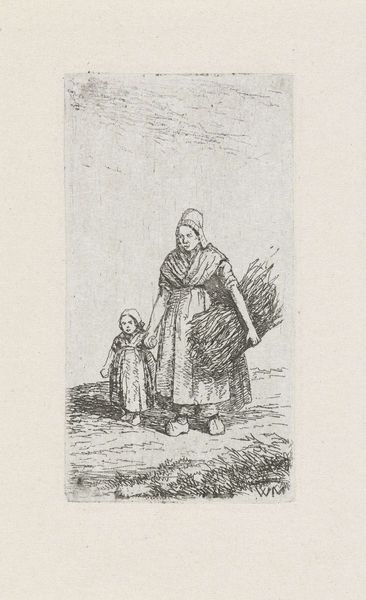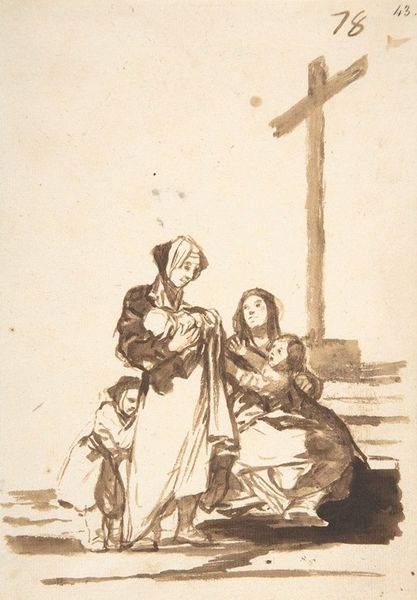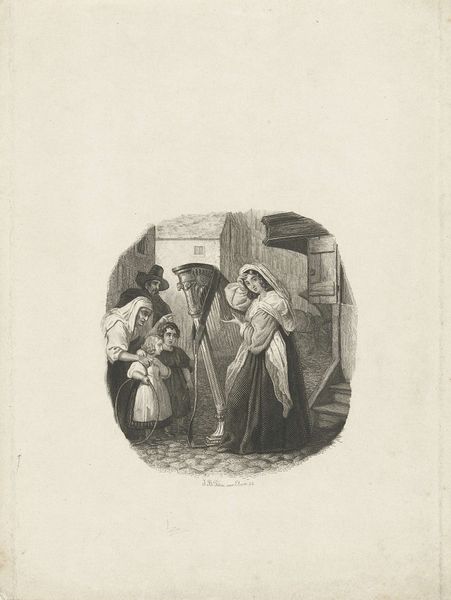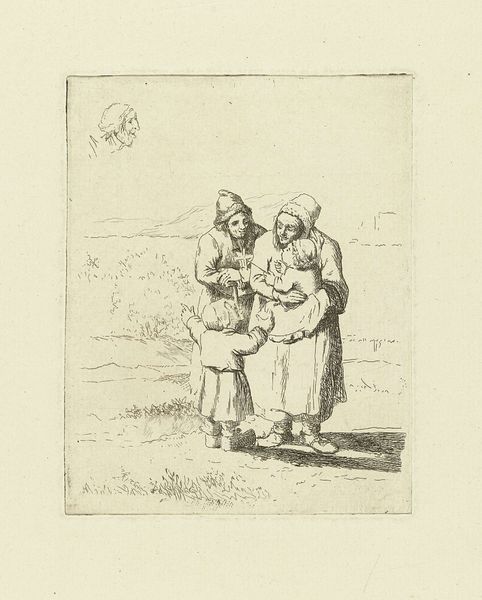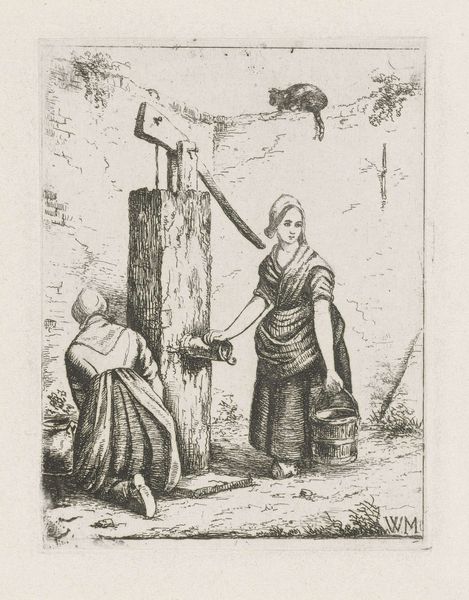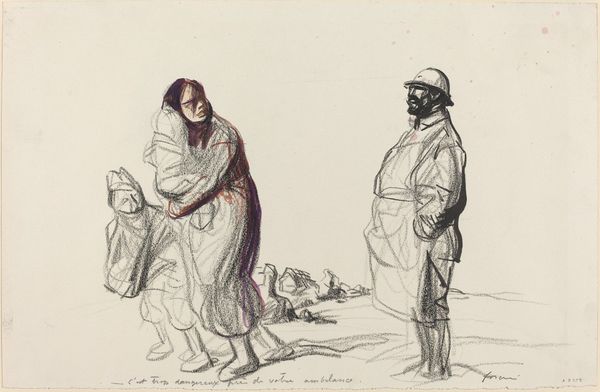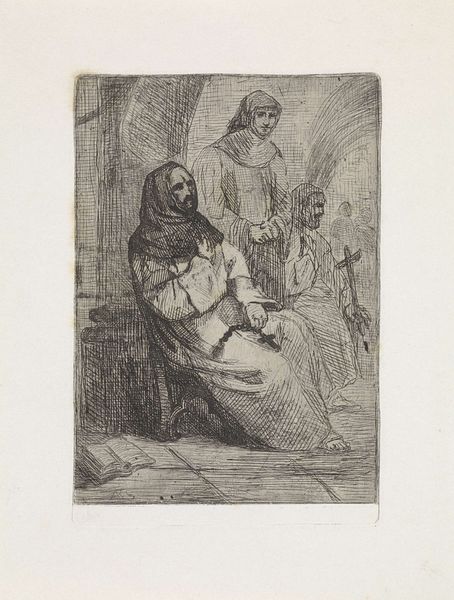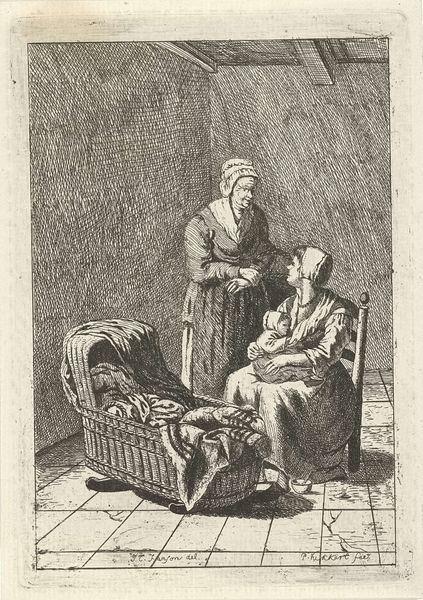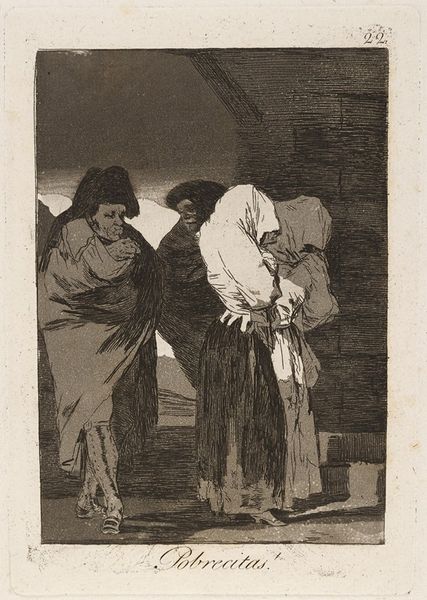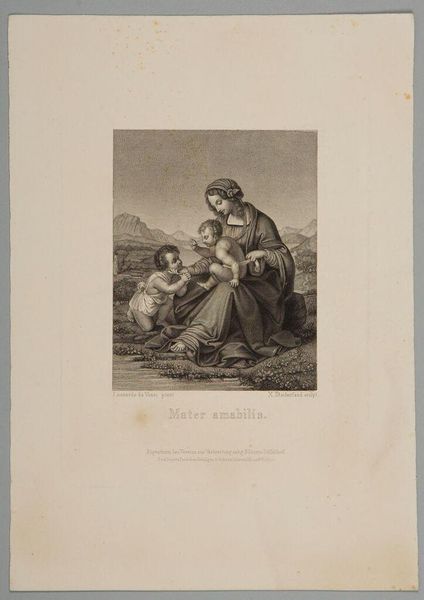
print, engraving
#
portrait
# print
#
old engraving style
#
landscape
#
figuration
#
romanticism
#
19th century
#
genre-painting
#
history-painting
#
engraving
Dimensions: height 114 mm, width 75 mm
Copyright: Rijks Museum: Open Domain
Curator: This engraving, dating back to 1834, is titled "Familie met op de achtergrond een dorp onder water"—Family with a village underwater in the background—created by Philippus Velijn. Editor: It strikes me as incredibly melancholic. The grey tones accentuate the clear emotional weight on the figures… their world quite literally seems to be drowning. Curator: Velijn uses the precise, almost scientific, technique of engraving to portray a scene steeped in Romantic sensibilities. Look at how the precise lines and cross-hatching create texture and depth, despite the monochrome palette. Editor: It makes me think about the laborious process involved, cutting into that metal plate, a tangible dedication of labor to represent hardship and grief. How did Velijn engage with the idea of reproducible art—prints intended to circulate—while tackling such an emotive topic? Curator: I wonder if it served a documentary purpose. Print was, after all, the mass medium of the era. Disseminating scenes like this might have been intended to elicit empathy or even garner support for those affected by such tragedies. The stark depiction could become a symbol of shared sorrow. Editor: Indeed. Engravings made art more accessible. They transformed singular experiences of tragedy into commodities, things seen and understood through different eyes in different contexts. Look at the very ordinary presentation; this isn't just an "art object" but an instance of making grief a part of everyday visual culture. Curator: It is an object lesson about shared humanity and maybe, how fleeting safety and comfort can be. Despite being an engraving, it carries a certain kind of energy, of loss...a very human cry frozen in time. Editor: And those material choices – the very act of carving devastation into copper – invites me to meditate on both how we produce, and how we remember.
Comments
No comments
Be the first to comment and join the conversation on the ultimate creative platform.
